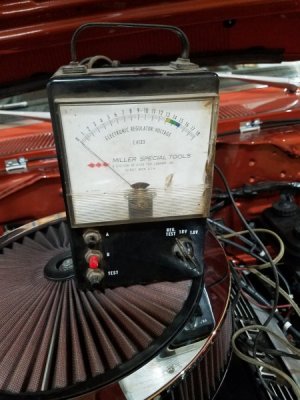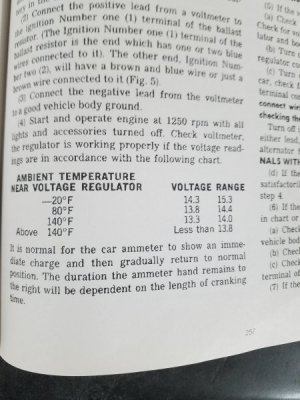Got this car put back together 4 years ago. Everything in the electrical system is new except the ignition switch. Car is a 1970 and using this style alternator.
During restoration I installed a brand new USA made MP 3438150 voltage regulator. It was working great for 200 miles and then I noticed the operating voltage had dropped from 14.2 to 13.2. Had the alternator checked and it was fine. Called Summit and they sent me another Mopar regulator under warranty. While I was waiting for that, I bought a couple of Standard VR125's (made in China). I put one of those on and everything was fine again. Last summer I noticed the volt meter was running over 15, but chalked it up to cheap gauges. Finally got around to replacing them with some good Autometers. I now have 5000 miles on the car. Same high voltage as before, and this time I verified it with a multimeter. Was running at 15.5 volts. So I dug out the warranty replacement MP that Summit sent me years ago. Installed that and the voltage was right at 14.2. Life was good for a week, but now the voltage has dropped to 13. Dug out the second Standard VR125 I bought previously. This one is putting out 15.4 volts. So I have 2 Mopar 3438150's that both started out good and then went to regulating around 13 volts. 2 Standard VR125's. One ran for quite awhile ok and then over regulates at 15.5, and the second one is 15.4 out of the box. All 4 of these units were bought at the same time. Anybody else ever had a crazy situation like this? Are there better regulators I could try?
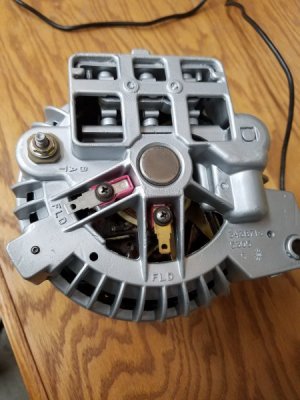
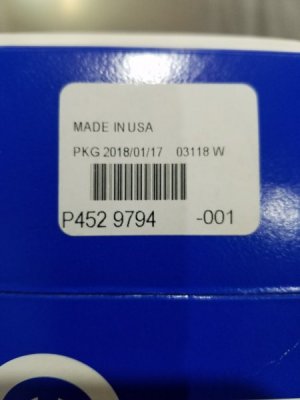
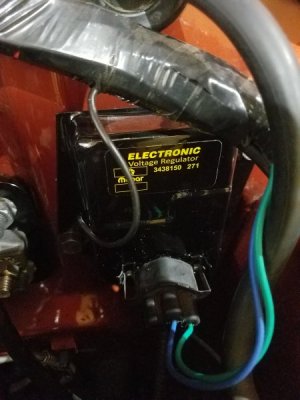
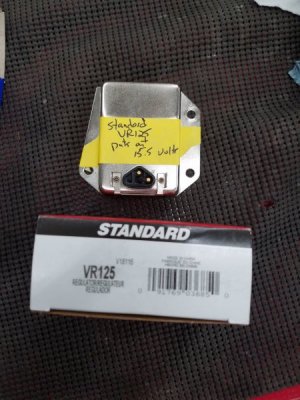
During restoration I installed a brand new USA made MP 3438150 voltage regulator. It was working great for 200 miles and then I noticed the operating voltage had dropped from 14.2 to 13.2. Had the alternator checked and it was fine. Called Summit and they sent me another Mopar regulator under warranty. While I was waiting for that, I bought a couple of Standard VR125's (made in China). I put one of those on and everything was fine again. Last summer I noticed the volt meter was running over 15, but chalked it up to cheap gauges. Finally got around to replacing them with some good Autometers. I now have 5000 miles on the car. Same high voltage as before, and this time I verified it with a multimeter. Was running at 15.5 volts. So I dug out the warranty replacement MP that Summit sent me years ago. Installed that and the voltage was right at 14.2. Life was good for a week, but now the voltage has dropped to 13. Dug out the second Standard VR125 I bought previously. This one is putting out 15.4 volts. So I have 2 Mopar 3438150's that both started out good and then went to regulating around 13 volts. 2 Standard VR125's. One ran for quite awhile ok and then over regulates at 15.5, and the second one is 15.4 out of the box. All 4 of these units were bought at the same time. Anybody else ever had a crazy situation like this? Are there better regulators I could try?





